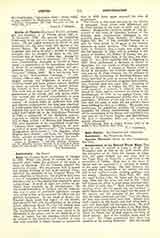

Annius of Viterbo (GIOVANNI NANNI), archeologist and historian, b. at Viterbo about 1432; d. November 13, 1502. He entered the Dominican Order early in life and won fame as a preacher and writer. He was highly esteemed by Sixtus IV and Alexander VI; the latter made him Master of the Sacred Palace. He was skilled in the Oriental languages, and was so devoted a student of classical antiquity that he changed his name to one that reminded him of Rome‘s Golden Age. Among his numerous writings may be mentioned: (I) “De futuris Christianorum triumphis in Turcos et Saracenos”; a commentary on the Apocalypse, dedicated to Sixtus IV, to Christian kings, princes, and governments (Genoa, 1480); “Tractatus de imperio Turcorum” (Genoa, 1480). He is best known, however, by his “Antiquitatum Variarum”, 17 vols. (Venice, 1499, et step.). In this work he published alleged writings and fragments of several pre-Christian Greek and Latin profane authors, destined to throw an entirely new light on ancient history. He claimed to have discovered them at Mantua. This work met at once both with believers in the genuineness of his sources, and with severe critics who accused him of willful interpolation, or even fabrication. The spurious character of these “historians” of Annius, which he published both with and without commentaries, has long been admitted. It would appear that he was too credulous, and really believed the texts to be authentic. It may be recalled that Colbert left to the Bibliotheque Nationale at Paris a manuscript of the thirteenth century, supposed to contain fragments of the writings of two of these writers, i.e. Berosus and Megasthenes. The more important of his unpublished works are: “Volumen libris septuaginta distinctum de antiquitatibus et gestis Etruscorum”; “De correctione typographica chronicorum”; “De dignitate officii Magistri Sacri Palatii”, and lastly, his “Chronologia Nova”, wherein he undertakes to correct the anachronisms in the writings of Eusebius of Caesarea.
JOS. SCHROEDER

